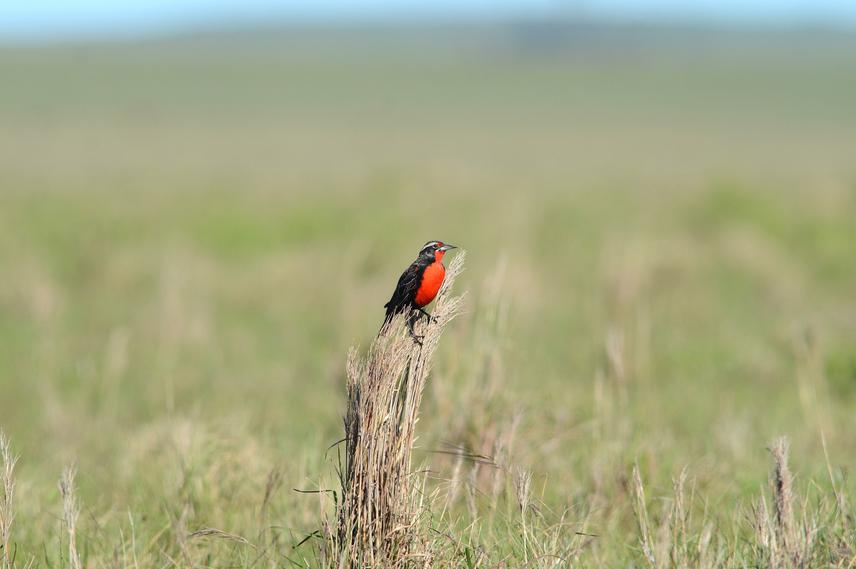Adrián Azpiroz
Other projects
29 Aug 2008
Pampas Meadowlark: Using a Flagship Species to Promote Conservation in the South American Grasslands I
7 Sep 2010
Pampas Meadowlark: Using a Flagship Species to Promote Conservation in the South American Grasslands II
9 Oct 2013
Pampas Meadowlark: Using a Flagship Species to Promote Conservation in South American Grasslands III
This project uses the Pampas Meadowlark, a globally threatened bird, as a flagship species to promote grassland biodiversity conservation throughout the Pampas biome in Argentina and Uruguay.

Male Pampas Meadowlark. This is one of the individuals that reoccupied the traditional nesting site during the 2017 breeding season.
In 2004 and 2005 I conducted a study on grassland bird ecology as part of my PhD studies. This work resulted in the first assessment of native and altered grasslands as habitat for grassland birds in Uruguay. During this study, direct threats to bird populations were detected at one study site: the Arerunguá region. This area still harbours large expanses of native grasslands that provided high-quality habitat for several threatened birds. For the last 7 years (in collaboration with other conservationists) I have combined education activities and research to improve the conservation status of grassland birds in this unique region. In addition, during the last phase of the project our work was extended to additional sites in Argentina through new collaborations with colleagues and organizations. Research activities have focused on the Pampas Meadowlark, one of the most threatened grassland birds of the Pampas biome.
This species has lost more than 90% of its historical range due to habitat alteration, and thus, represents a particularly suited model for grassland bird ecology research and conservation in the region. Concerning education activities, the Pampas Meadowlark has been used as a flagship species to raise public awareness and promote grassland biodiversity conservation. These activities have already resulted in tangible conservation outcomes such as the implementation of habitat management measures to favour grassland birds of conservation priority. The Completion Grant will be used to carry out field activities in key grassland sites in northern Uruguay and central Argentina.
Research will focus on population monitoring and reproductive success. Education will focus on local communities. An important outcome of the new phase of the project will be the preparation of a technical document that will condense our most important scientific findings in the way of specific conservation guidelines to favour threatened grassland birds (and other associated grassland biodiversity). This product will be distributed among key government stakeholders in both countries.